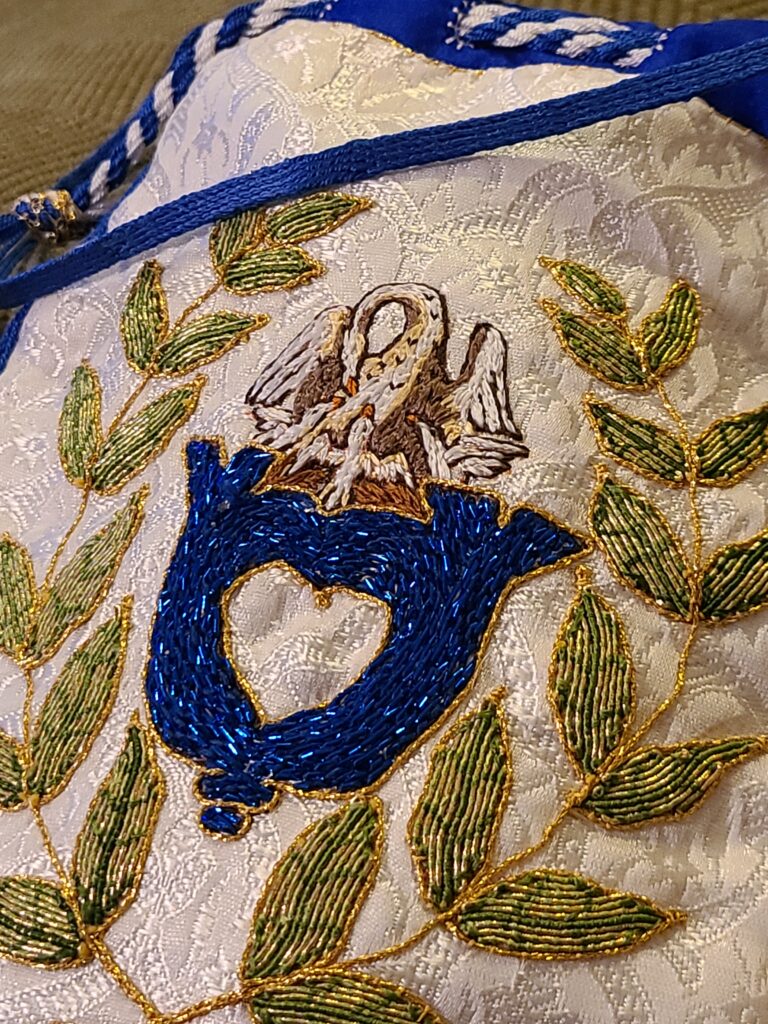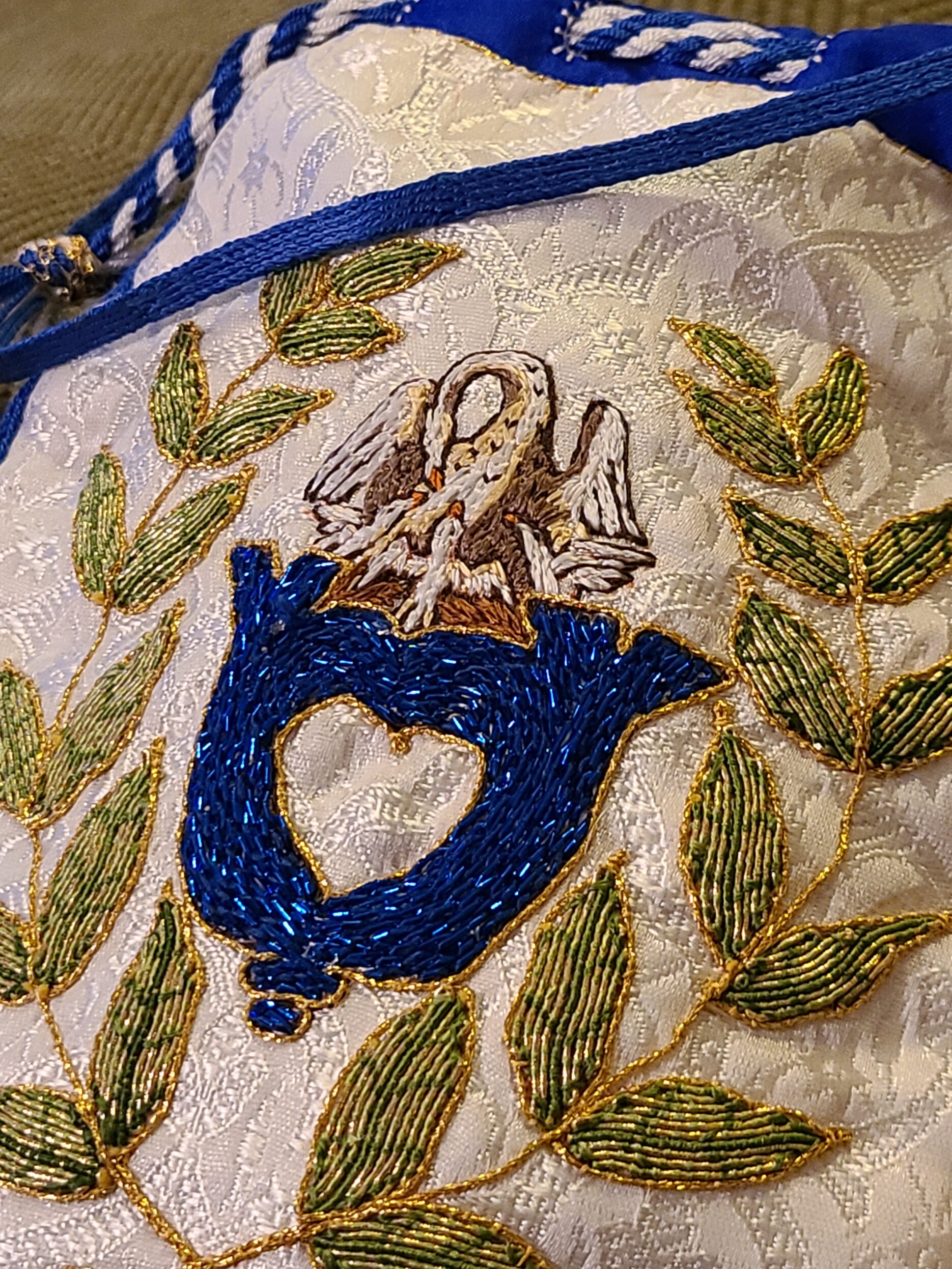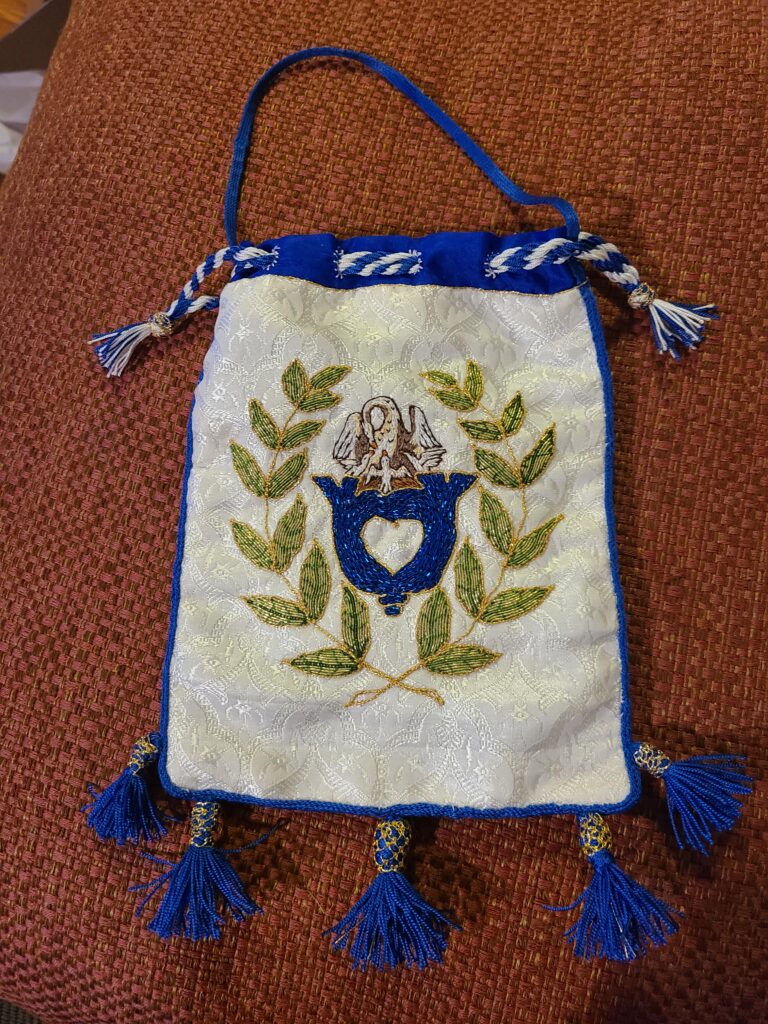
Lillia was going to be elevated to her 2nd peerage: the Laurel, and I wanted to make something special for her. As many of the standard pieces of regalia were already claimed, I offered a pouch or purse. Lillia’s colors are blue and white and she is interested in the 14th century. I decided to do a mix of embroidery styles that were seen on purses, clothing, altar frontals, etc.
I decided to use silk fabric, silk threads, metal threads. Her heraldry is a blue crampet, which is the blue item at the center of the design. The Pelican tops her crampet as her 1st peerage. The crampet and pelican are surrounded by the wreath of laurel leaves. I ordered supplies and got to work!
First the design was traced onto the main fabric, a silk brocade. The backing fabric, a fine evenweave linen, was stretched onto a slate frame, and the silk brocade attached before final stretching to ensure a taut surface.
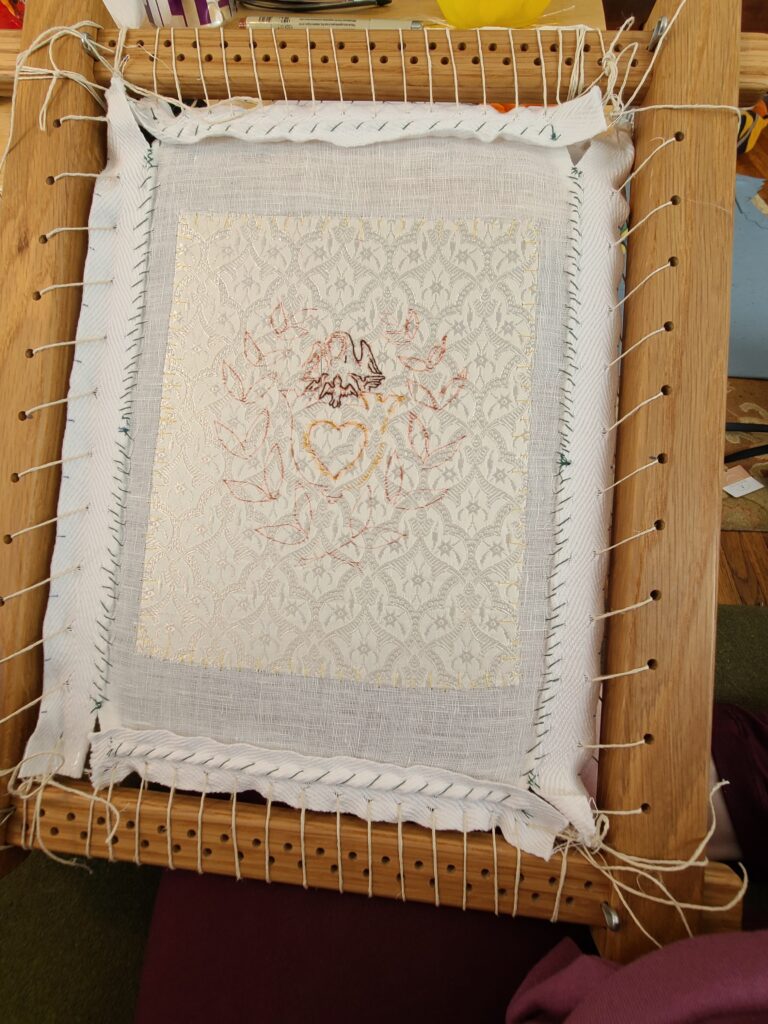
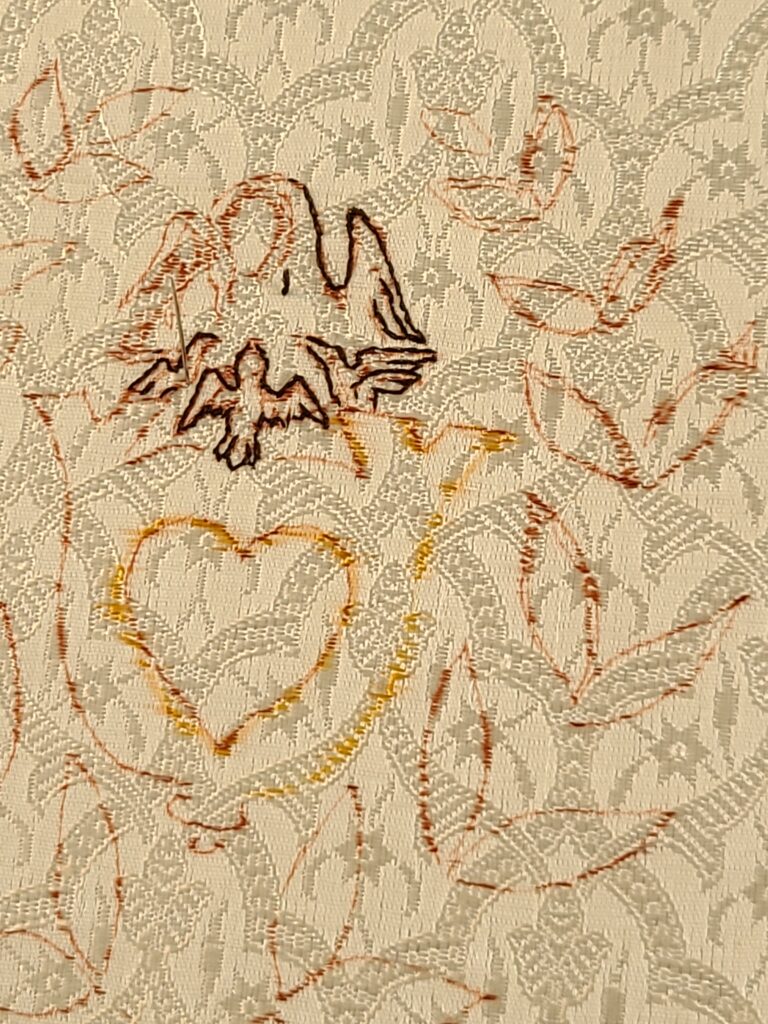
The first needlework was to outline the pelican in it’s piety, using stem stitch with silk filament thread.
Then the crampet was stitched in underside couching with the blue metal thread.
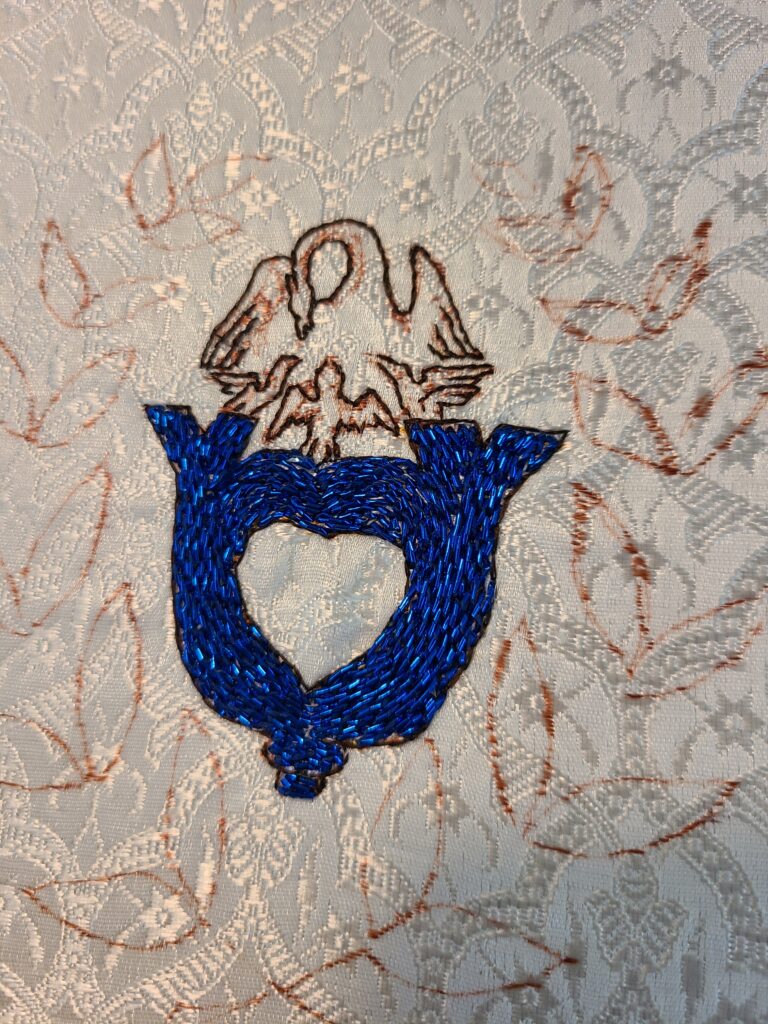
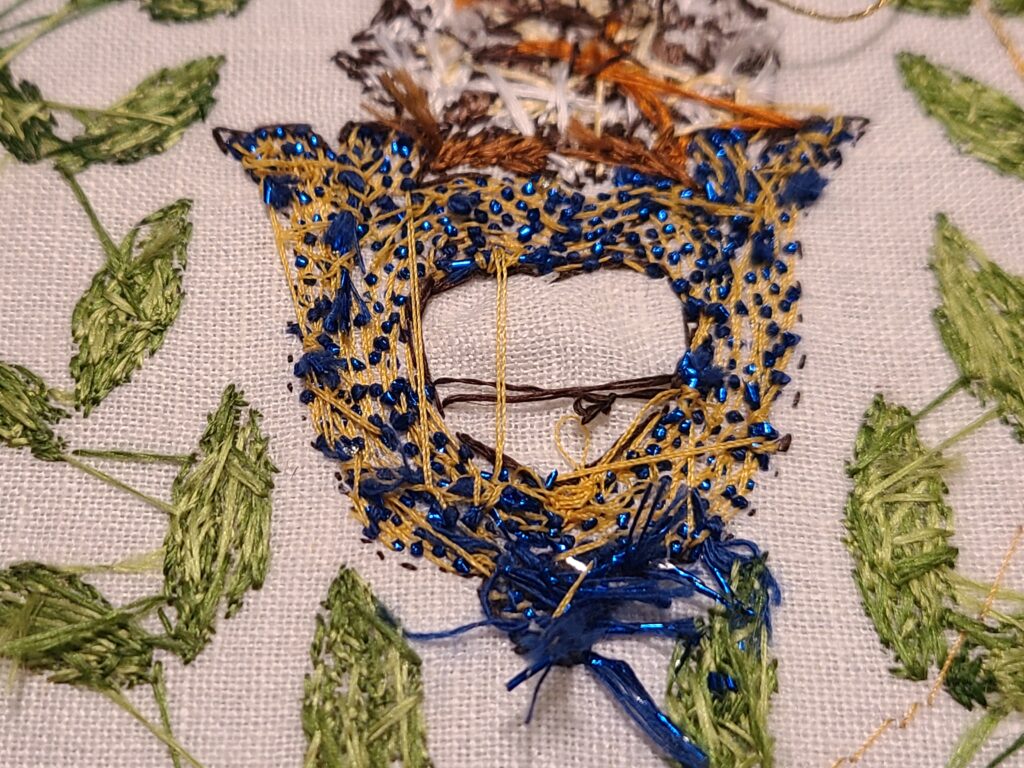
Back of the underside couching. Generally the metal threads make little ‘dots’ at the area they are pulled through, with the couching thread, in this case linen thread, runs between and around the dots. The dots are particularly obvious with the blue metal thread.
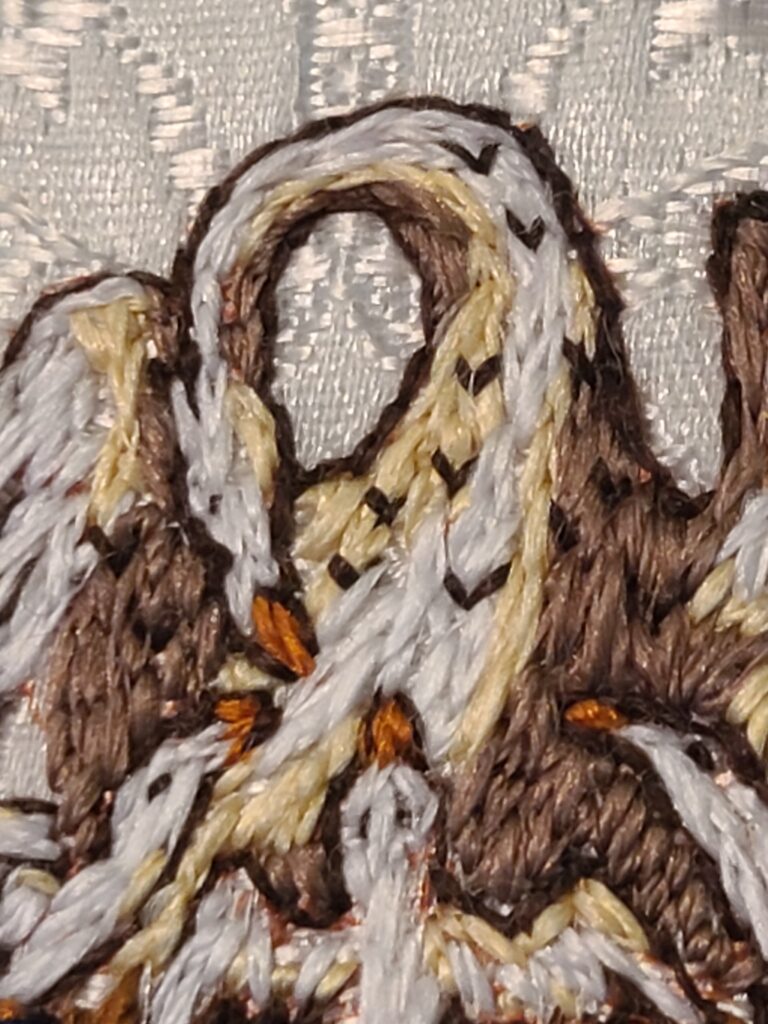
Next the pelican and the baby birds were filled with split stitch done with 2 strands filament silk, which is about the half the diameter of a single strand of DMC floss which has been divided into separate strands.
Finally the laurel leaves were completed with the same filament silk in Or Nue, silk shading, completed over one strand of gilt passing thread #4. The leaves were so small, that it was not possible to get a reasonable leaf shape without doing one strand at a time
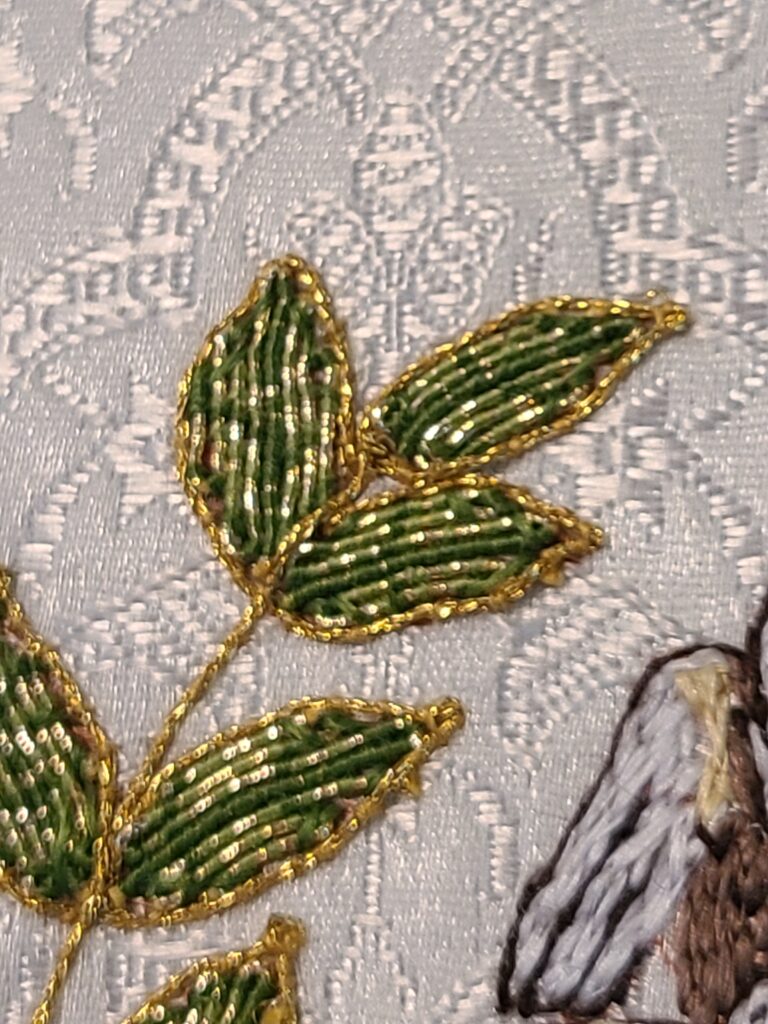
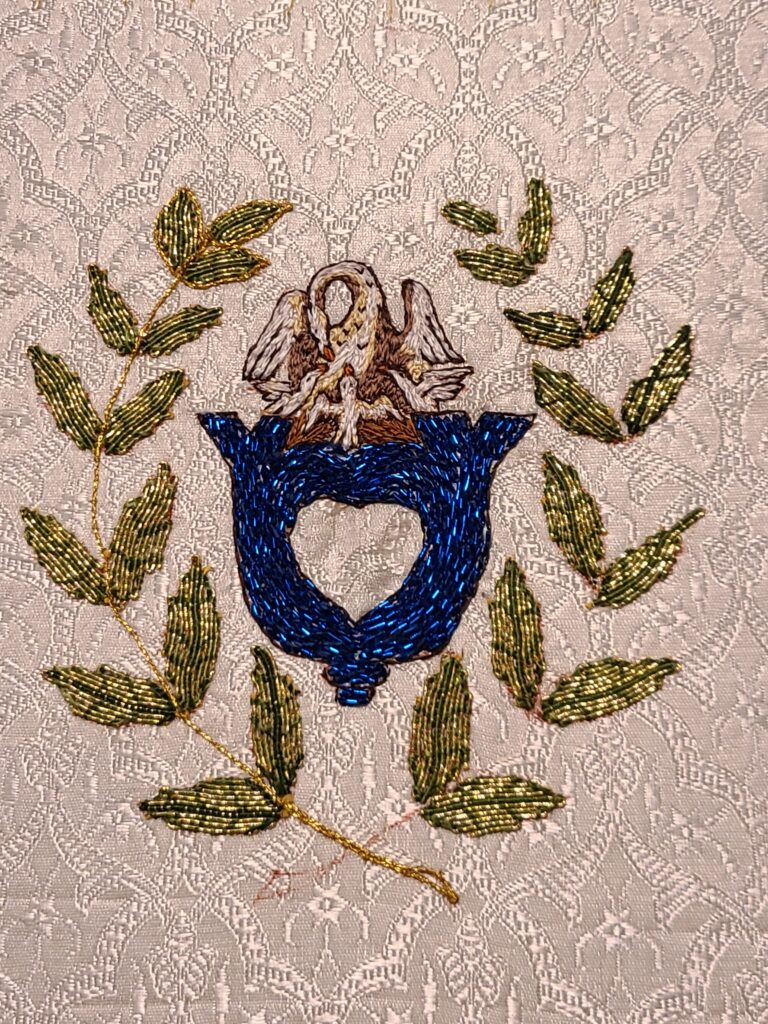
This photo shows the leaves being outlined with gilt twist #3, see the upper left leaves. This was surface couched around the leaves, and the crampet.
Once the embroidery was complete, it needed to be made into a purse. Purses sometimes had tablet woven edges, which were likely done for strength rather than decoration. The edge on this purse was tablet woven with a heavier blue silk thread on four tablets, around all three seams.
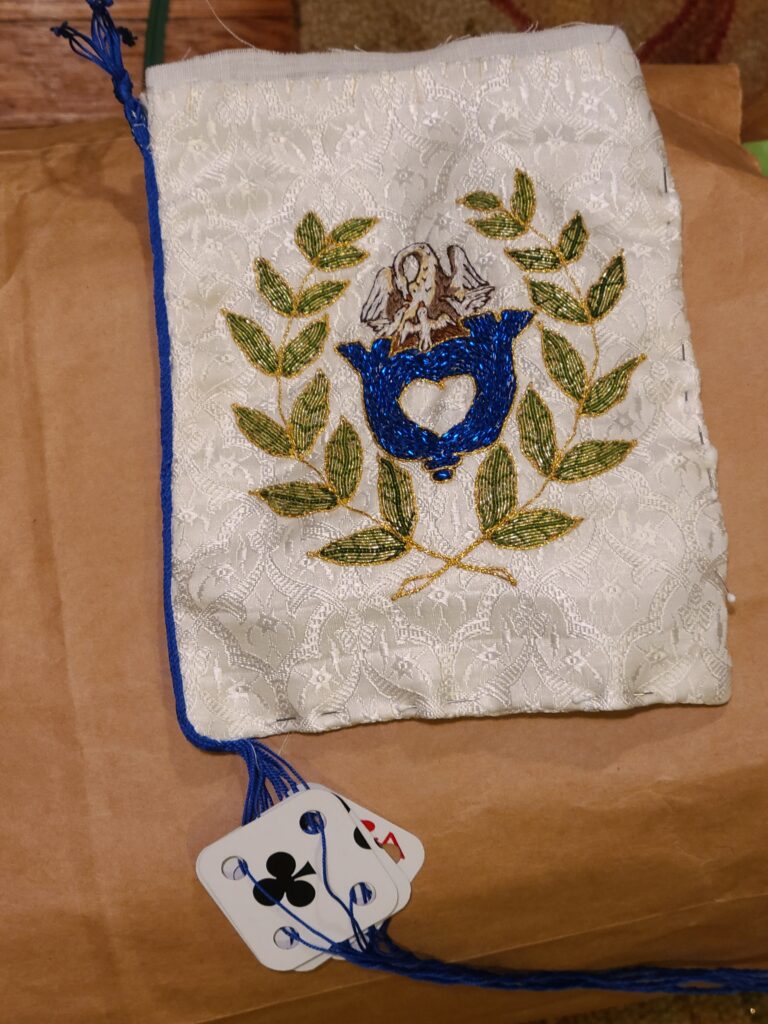
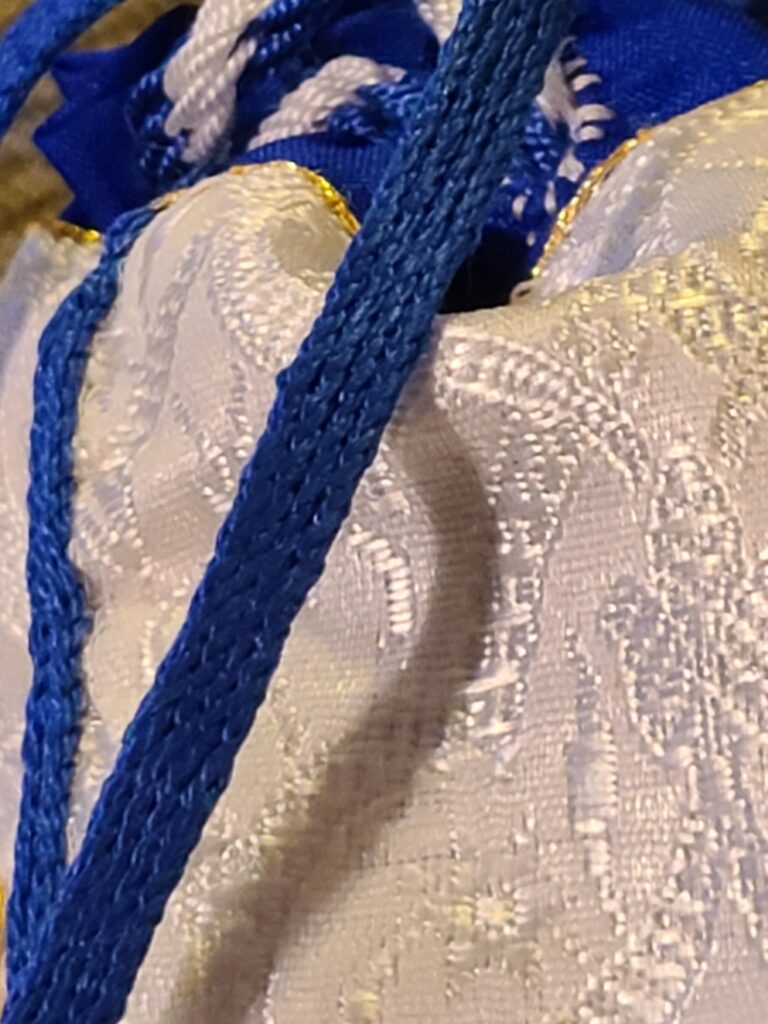
The tablet weaving was then extended onto a short strap over the top of the purse, meant for attaching the purse to one’s belt.
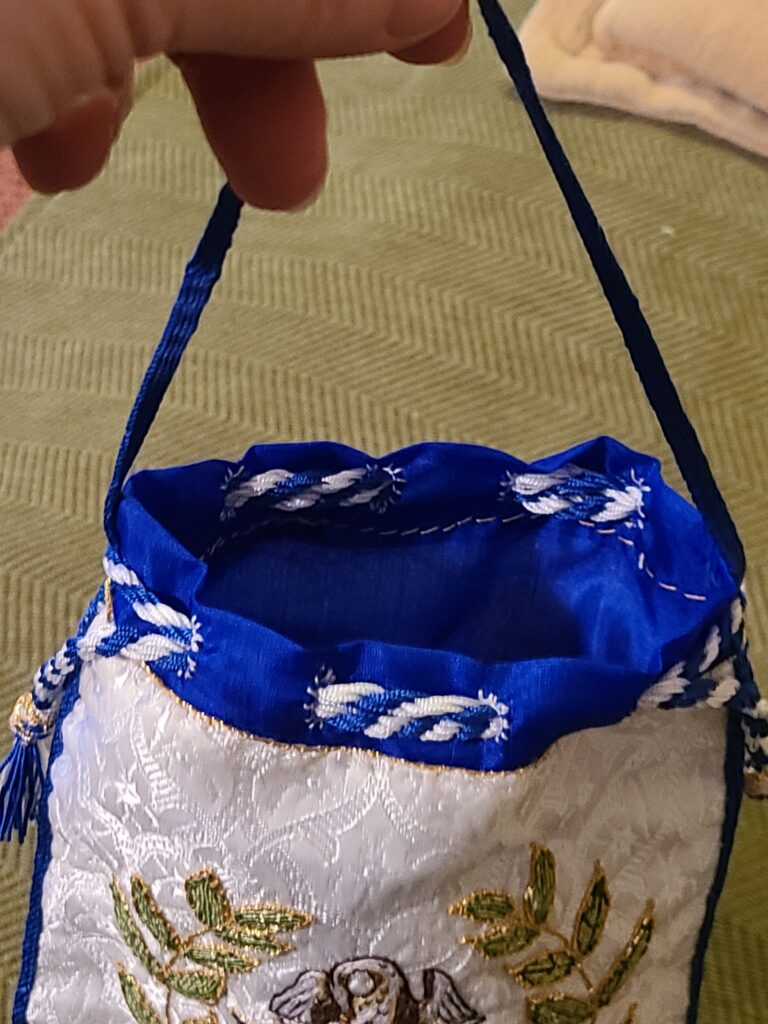
The purse was lined in a blue silk tabby weave, and eyelet holes were added around the top to allow for a drawstring closure.
Two Fingerwoven cords were made using the heavier silk thread to make a ’rounde of eight’. These cords were both threaded to the same eyelet holes, so that you could pull a loop on each end and together close the purse.
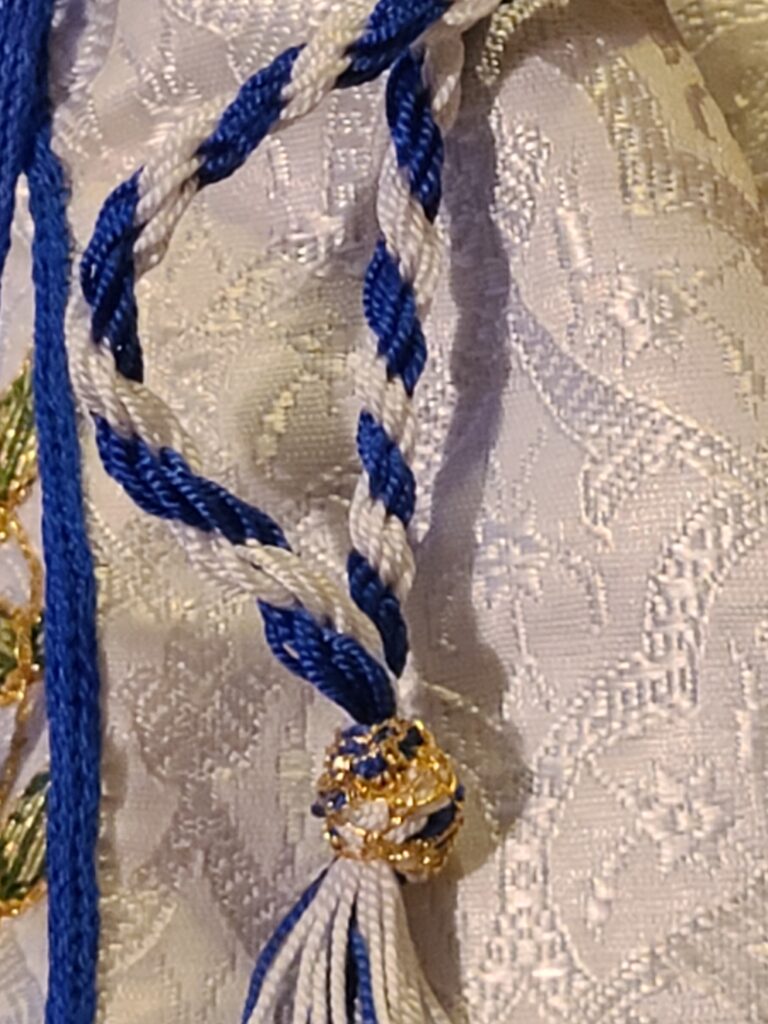
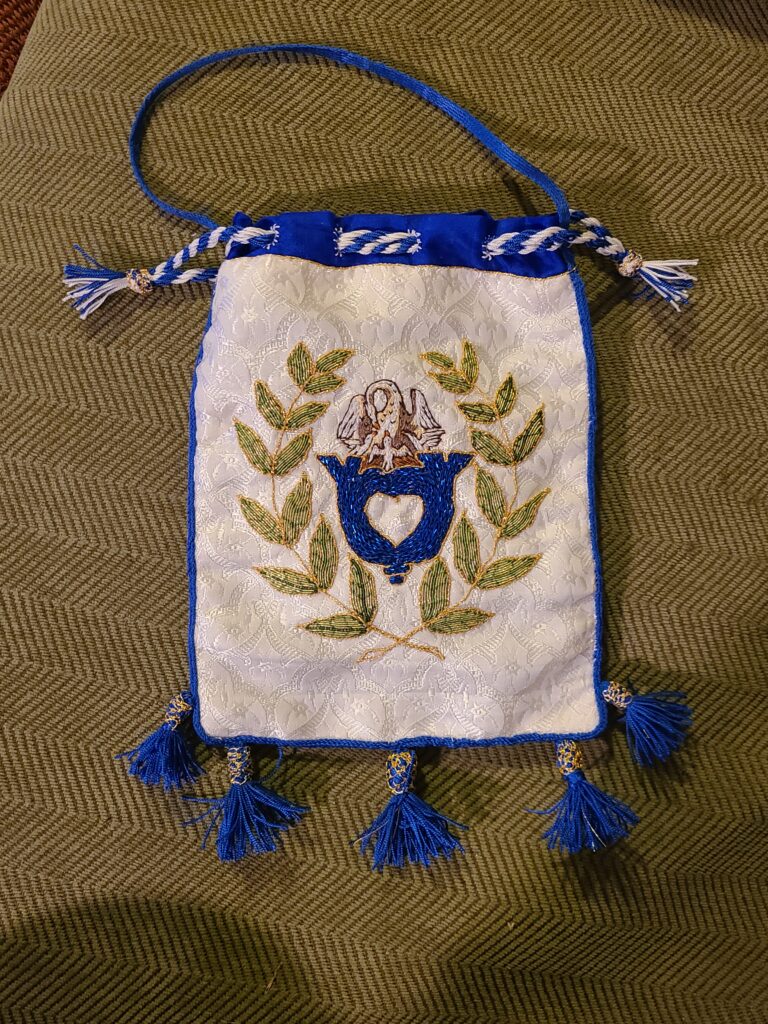
Lastly silk tassels were made, as seen on many medieval purses. The head of the tassel has gold thread in an openwork buttonhole stitch.
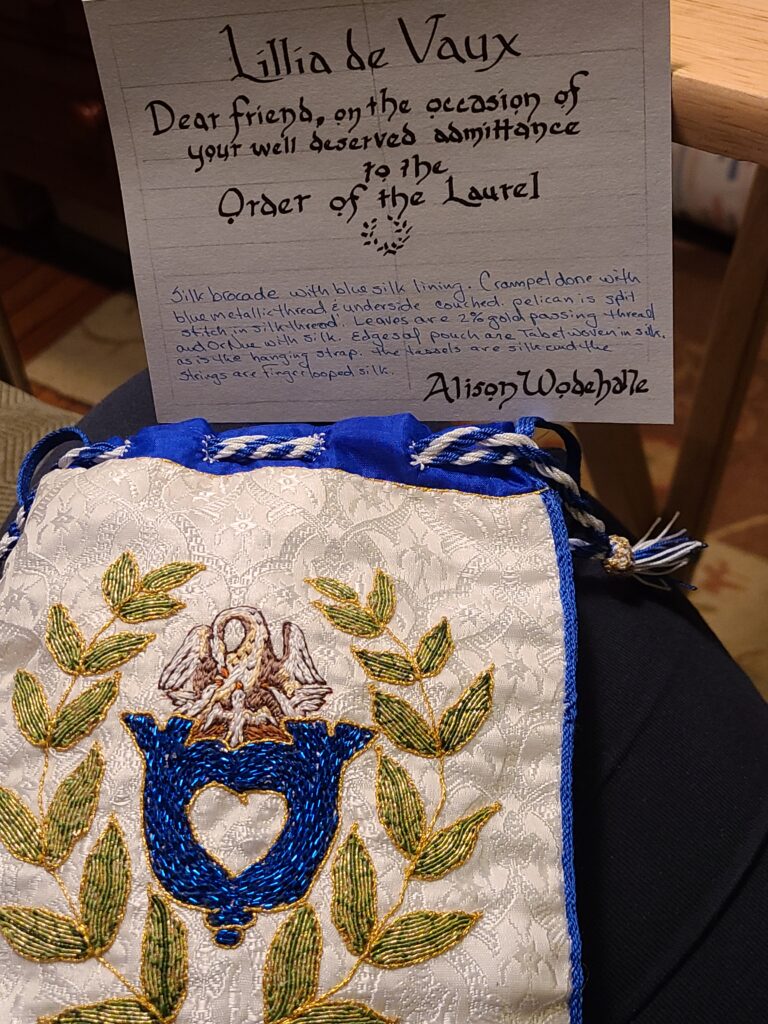
All in all, I think the project went relatively well. It was meant as a gift, not a research project, but period techniques and materials were employed. It took 4 months of fairly steady work. I wish it was slightly bigger, but I hope she is happy with it!
